Today, many black heroes grace the pages of comics, and some are now making it to the silver screen. But it’s been a long road filled with very small steps and long periods of no movement at all. Here is a chance to see how black comic book characters appeared in comics from the earliest “Pioneer era” through the Golden Age, Atomic Age, Bronze Age, the Modern Age, to the present day. These historical treasures depict black characters from the 1800s to today, spanning virtually the entire history of American comic books.
The Chronological History of Black Characters is a collaboration between the Museum Of UnCut Funk and a private collector on the west coast.
The Pioneer Age
Includes USA Slave Era through Civil War and Reconstruction. The first American comics appeared in what cultural experts call the “Pioneer Era,” which began while slavery was still legal in many American states. The Pioneer Era encompasses the final days of slavery and goes for more than a decade after its end, giving way to the “Victorian Era” of comics circa the late 1890s. The Pioneer era is reflected in this collection with a couple dozen “comic engravings” clipped from magazines like Punch and Harper’s Weekly and other publications that depict slaves and free Blacks. Some of the cartoons predate the Civil War and attempt to put life as a slave in a humorous light. Some published in the days leading up to the Civil War make it clear that threats of secession and the war itself, were about slavery. Later cartoons, published during and after the war, run the gamut from thoughtful and sympathetic depictions of slaves to racist and alarmist images reflecting fears of what emancipation will lead to and then some comics begin to depict Blacks living as free people.
Puck original comic art by Fred Opper circa late 1800’s – The “Victorian Era” of comics began with the explosion of the popularity newspaper funnies. Opper was one of the main early figures of the art form. He drew this comic gag, which is representative in its depiction of Blacks, often depicted as “uppity” former slaves in the late 19th century.
The Victorian Era
The rise of newspaper strips and syndicate-related comic books:
Plantation Life Comic Page circa 1883, depicts life on a tobacco plantation, with whites performing the easier jobs while the negroes perform the manual labor.
Judge’s Library circa 1894, originated in England but sold well for a time in the United States. Black characters appeared from time to time, generally in very stereotyped fashion.
Barker’s Komik Souvenir circa late 1890s, early 1900s, stereotyped Black comedic characters abounded in this series, which was published to promote farm products.
Judge’s Library Black Art issue circa 1901, An entire issue dedicated to the depiction of black characters and it’s just as bad as you might expect.
The Platinum Age
Bridges the newspaper strip books and the first modern era comics, prior to the superhero explosion. Little Black Sambo, Pore Lil Mose, and others in Sunday comics from 1901 – 1910.
Newspaper comics were a huge cultural fad in the late 1800s through the 1930s, and their popularity led to sales of comic strip compilations, forerunners of modern comics. Among them Little Black Sambo and his Funny Noises, Pore Lil’ Mose, and others, including The Adventures of Poor Old Robinson Crusoe with a very comedic look at the literary hero and his African sidekick, Friday.
Little Black Sambo was a very popular character in the early days of newspaper comic strips. The strip featured Sambo, a group of white friends his and adversaries. Typical episodes featured Sambo getting the better of the white kids.
Pore Lil Mose circa 1902 “Pore Lil Mose” was very popular in his day, which was more than a hundred years ago. Mose is a comic figure, and a stereotype, but despite that the goal here was clearly to present him in a positive light. He is a pleasant, intelligent, well-meaning kid, and his black friends and relatives are just as likely to be portrayed as intelligent and accomplished as the white characters.
The Adventures of Rufus Rastus Brown in Dark Town circa 1906 Black humor, a lesser known rip-off of Little Black Sambo and Pore Lil Mose.
Mutt and Jeff circa 1910. Mutt wants tickets to the races and is pleased when he gets them for a good price — until he finds himself sitting in the colored section.
Mandrake the Magician Big Little Book circa 1935 – Lothar the first heroic African to appear in a book of comics, though he was only a sidekick andstereotypical in many ways. Some historians like to point out that Lothar and Mandrake function as a team, but the book describes Lothar as Mandrake’s giant black slave. Despite being a Prince of the Seven Nations he was still a servant to Mandrake and spoke pidgin English. He had incredible powers, but worked as Mandrake’s chef. Lothar was not just strong but super strong. He could lift an elephant one-handed. He was impervious to man-made weapons and invulnerable to fire.
Joe Louis, the Brown Bomber circa 1936 – This is not a comic book as it includes text and photographs, but it’s from the Big Little Books series which was a precursor to comic books.
More Fun Comics #18 circa 1937 – 1st black character on modern comic book cover. An African woman has been fished out of the ice by an Eskimo.
Funny Picture Stories #7 circa 1937 – A tribe of African jungle warriors marks the second appearance of Black people
Star Comics #1 circa 1937 – The Cheerio Minstrels, a minstrel group that sang and told corny jokes to an unseen audience.
The Golden Age
Best Comics #1 – 4 circa 1939 – The 1st black hero in comics. It was also the first time that any comic book featured a hero, let alone a costumed, hero, who was black. The “Red Mask” is an African prince who, for reasons never fully revealed, has taken a secret identity as the Red Mask, to fight evildoers. Since this story was published in the U.S. during the height of Jim Crow segregation, it was, for its time, a bold attempt. While his black counterparts in other comics, novels, film and radio stories of the day were relegated to goofy sidekick status, this black-skinned hero fights white-skinned villains and even romances the white damsel in distress. On the cover of the first issue, the Red Mask is seen in typical fashion for 1939, shielding a woman with his body while he socks the villain hard across the jaw. Of course, what made it completely atypical for 1939 was that it the cover showed a black man punching a white man. On the cover of the second issue, however, the Red Mask is seen as a white man shooting black people. On the inside, however, the Red Mask was still black and the main villain was still white. The attempt to fool readers didn’t help. Ironically, while the main feature of “Best Comics” brought comics its first black hero, beginning with issue #2 the comic also featured the introduction of a recurring black character named “Mr. Ink,” who applies for a job with “Perry Wow” and gets it after he tells her “Ah’s lookin’ fo’ a position wid no work attached to it – if I kin find dat kind of a job, ah’ll work fo’ nothin'” Ink gets the job despite the observation of Peggy’s friend that he’s “technicolored.”
The World War II Era
During W W II, Black characters were uncommon in comic books, and when they did show up they were mostly either criminals, or stereotyped sidekicks for the mainstream superheroes of the day. Jumbo #17, Blue Bolt V7#6, and several Supermagician Comics with threatening African warrior. Non-threatening Blacks were either pretty jungle women in distress, or comical-looking natives as in Blue Bolt V6#4 and Muggsy Mouse #2.
Tom Mix Comics #4 circa 1940’s – Tom Mix starred in comics published by a number of publishers, Fawcett included, but he also appeared in his own series of comics published by Ralston Cereals. The cover shows Wash, the Black comedic caricature sidekick, rescued from a stampede by Tom, dragged along behind Tom’s horse. Of course, this was brought out at a time when the American armed forces were still segregated, something that changed only in 1949. On the radio, Tom and Wash advertised Ralston cereals together. The voice of Wash was quite obviously played by a white actor pretending to be Black.
Captain America Comics #9 circa 1941 – Marvel Comics’ first superstar, typifies comic book treatment of Black characters in the early 1940s. When they weren’t stereotypes, they were villains. In this case, the villain is a Black murderer who continues wanton killings even after he is executed when his hand gets transplanted onto the hand of a white artist. The “Black Hand”corrupts the white artist and turns him into a murderous fiend. The Black villain’s hand is the only part of him which makes the cover of this book.
Captain Marvel Comics #23 has a rare cover appearance of Captain Marvel’s sidekick “Steamboat,” helping Captain Marvel sink an enemy ship with a sledgehammer and a battleship shell.
Spirit Section comic circa August 22, 1943 – shows Spirit sidekick Ebony in his zoot suit caught up in a romantic triangle with the equally stereotypical Pierpont and Clarissa.
Classic Comics #15 circa 1943 – The long-running classic comics series, later retitled Classics Illustrated, was used by generations of students who wanted a short-cut to reading the book itself. The first issue dealing with Black themes was this rendition of Uncle Tom’s Cabin, the Harriet Beecher Stowe novel that Abraham Lincoln once said was responsible for escalating the Abolition Movement, and the Civil War.
Clean Fun With Shoogafoots Jones circa 1944 – This supposedly well-intentioned, but nonetheless racist, comic seeks to give spiritual guidance to Blacks so they will change their ways.
Young Allies #9 circa 1943 – A group of “pint-sized” heroes who fight the Axis powers during World War II includes a black kid named Whitewash Jones who is described as a kid who can make a harmonica talk and watermelons disappear.
True Sport Comics Vol2 #9 circa 1944 — This wartime issue contains a story about the Negro Leagues of baseball, with bios and pictures of Satchell Paige.
Superman circa August, 1944 – This is the earliest example of a famous superhero pictured on a cover with a black character. Unfortunately, it’s a very stereotypical African native named Tim. It would be decades before an uber-famous hero shared another cover with a black-skinned character.
Atomic Age
By the end of World War II and a steep drop in the popularity of superheroes. This era saw many titles based on real-life adventures, true crime comics, romance comics, funny animals, horror comics. Growing interest in civil rights led some publishers to make attempts to integrate Black characters in their comics.
World’s Finest #17 circa 1945 – As WW II was drawing to a close, DC comics put a one-time feature in the back pages of this comic about Black soldiers who fought in the war. It was a call against discrimination, and the first time that Black characters appeared in a book which also featured solo stories of Superman and Batman.
Challenger Comics #1-4 circa 1945-46 – The next positive cover appearance of a non-stereotyped Black character in comic books came six years later, when Black soldiers who fight in segregated troops during World War II were proving their worth, and it seemed once again possible to market a book that depicted them as real people and heroes. This series was ground-breaking, as its reason for being was to promote tolerance and racial harmony. It appeared at the end of World War II, celebrating the end of fascism with a fantastic cover on issue #1. But the cover of issue #2 topped it with an amazing image of an interracial trio of men, Black, Asian, Hispanic fighting alien monsters bearing names like “fear” and “hate.” All stories revolve around a theme of tolerance for all people, races and religions.
Picture News #6 circa 1946 – The third cover appearance by a non-stereotyped Black man is also the first comic cover appearance of a real-life Black celebrity. Heavyweight champion Joe Louis graces the cover with an inside story retelling how he became The Winnah!
Negro Heroes #1 and 2 circa 1947 – This is considered the first comic book dedicated solely to depicting Black people in a positive, non-stereotypical light. It features true-life stories of famous Blacks such as Booker T. Washington. It features a cover story about Jackie Robinson, who had just broken the color barrier in major league baseball.
All-Negro Comics #1 circa 1947 – The first non-stereotypical comic book entirely comprised of fictional Black characters. Created by a legend of Black journalism, it features all Black characters from a wide spectrum of genres. There’s “Ace Harlem,” a Black detective, an African jungle warrior, Lion Man, a pair of buddies who get into comic misadventures, and even a story about fairies called Dew Lilliez who live in a magical world. The clothing, setting and slang perfectly capture the post-WWII zoot suit era. A second issue was planned, and reportedly even written and drawn, but it was never published. The 15 cent cover price only added to its difficulties. The publisher had trouble getting cooperation from distributors, even though Eleanor Roosevelt herself tried to help, writing a letter praising the book. But the book saw extremely limited distribution in isolated areas of the country and sold very poorly in those areas.
Jackie Robinson Comics circa 1949 – After his cover appearance on Negro Heroes #2, Jackie Robinson became the first Black man to star in his own comic series since Red Mask in Best Comics in 1939. Of course it also made him the first real-life athlete to star in his own comic, as well as the first Black man to have his name in the series title. Robinson’s story is told in both photos and drawings.
The Amazing Willie Mays circa 1950- The “Say Hey” kid followed Robinson into the major leagues, and into the comic pages.
Is this Tomorrow? circa 1950 – Earlier anti-prejudice comics were a bit more left-wing or anti-fascist, but in the 1950s, anti-Communist comics tried to have it both ways, appealing to racists afraid of Blacks joining unions, while at the same time implying that left-leaning policies would foment race riots and discrimination.
Negro Romance #1 and 2 circa 1950 – Superhero comics nearly disappeared between 1949 and 1956 with only Batman, Superman and Wonder Woman remaining in publication throughout. Replacing them were other genres, like crime stories, horror, science fiction, fantasy, funny animals, and romance. Blacks continued to appear seldom, if ever, in these stories. And, of course, with the few exceptions of Best Comics and All-Negro comics, had never appeared as heroes. But, with romance comics being huge sellers, Fawcett Publications thought a series might sell, featuring Black characters.
Detective Comics #167 circa 1951 – The first appearance of a person of color on the cover of a Batman comic was Cleopatra, in a story that sent Batman and Robin back in time.
King Solomon’s Mines circa 1951 – an interracial romance portrayed subtly but certainly in this issue, which features a battle between a white man and Black man for the heart of a Black woman.
EC Comics dominated sales with science fiction/fantasy/horror genres, with titles like “Tales from the Crypt” and “Weird Science-Fantasy,” but it also published intelligent titles focusing on Crime and War stories, some of which explored race relations in its imaginative and controversial crime, fantasy and horror titles, including several stand-out stories:
Two-Fisted Tales #30 circa 1952 – The first to depict Black soldiers in combat in its famous “Bunker!” story, set during the Korean War. This comic is the earliest example of a story that starred fictional Black characters that didn’t highlight the color of their skin. The story features an all-Black infantry unit that competes against an all-white unit to be first to capture a hill. But the conflict between the units is played out as if it’s as much more about simple team identity than it is about skin color.
Weird-Fantasy #18 circa 1952 – E.C. Comics of the 1950s are legendary for their science fiction/fantasy/horror stories, which contained well written stories that rivaled or exceeded the quality of its TV counterparts such as “Tales of Tomorrow” and, later, the “Twilight Zone” and The Outer Limits.” This story, dated 1953 but published in 1952, generated controversy with a race-themed story. Its initial publication preceded the Comics Code Authority, which came about largely due to Congressional criticism of EC’s horror stories. When EC sought to reprint the story a few years later when the Comics Code sought to have as much authority as its Soviet censor contemporaries the Code’s censor demanded EC change the skin color of a black astronaut.
Piracy #3 circa 1953 – features the story of a slave ship being taken over, reminiscent of the “Amistad” incident that was later chronicled in the film.
Fair Play circa 1954 – A rare giveaway comic book promoting tolerance. The story has a Black kid being shut out of a baseball game by a group of white kids until he proves his worth and they let him in the game.
Jungle Tales #1-7, circa 1954 – The hero of this series is an African Prince, Waku of the Bantu. While not actually the first attempt at a Black hero, it is nonetheless a significant attempt to create a series with a Black lead. Published by the company that would later be renamed Marvel Comics, with Stan Lee and John Romita, Sr. playing pivotal roles, this was a well-intentioned and well-made series. Waku is seen as a reluctant warrior who favors peaceful resolutions, in language that echoes Gandhi and Dr. King. It’s also interesting to note this series was published during the height of 1950s cold war and nuclear hysteria, with “commies” appearing as villains in some of the other strips. Unfortunately, Waku of the Bantu didn’t generate enough fan mail to keep his place in this series.
The Silver Age
Black characters began to be introduced in ways that were not overtly racist. In parallel with the civil rights movement, Black characters began to take meaningful roles in comics.
Martin Luther King, Jr. And The Montgomery Story, circa 1957. This comic details King’s efforts to desegregate the South, which would remain officially segregated for another seven years after this book was published. This comic not only recounts Rosa Parks civil disobedience and King’s efforts that follow, but also points to those efforts as the way of the future, the “Montgomery Method” by which official segregation could and would ultimately be overcome.
For More Information:

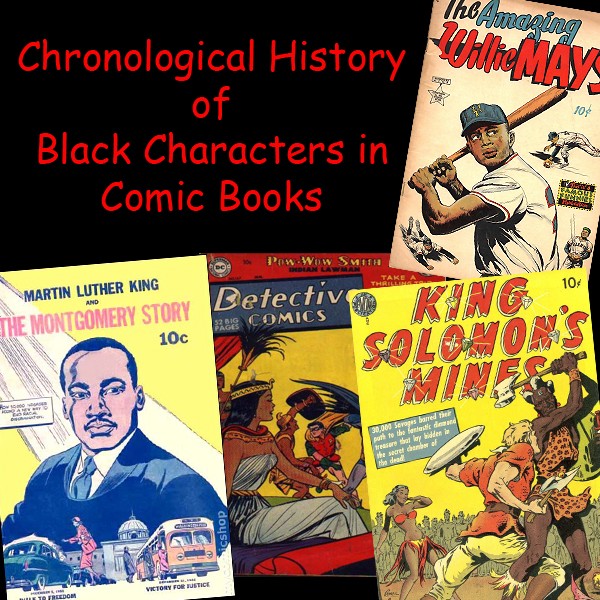
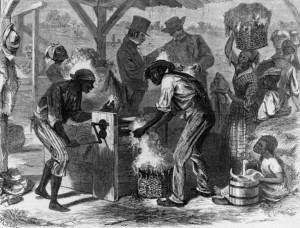

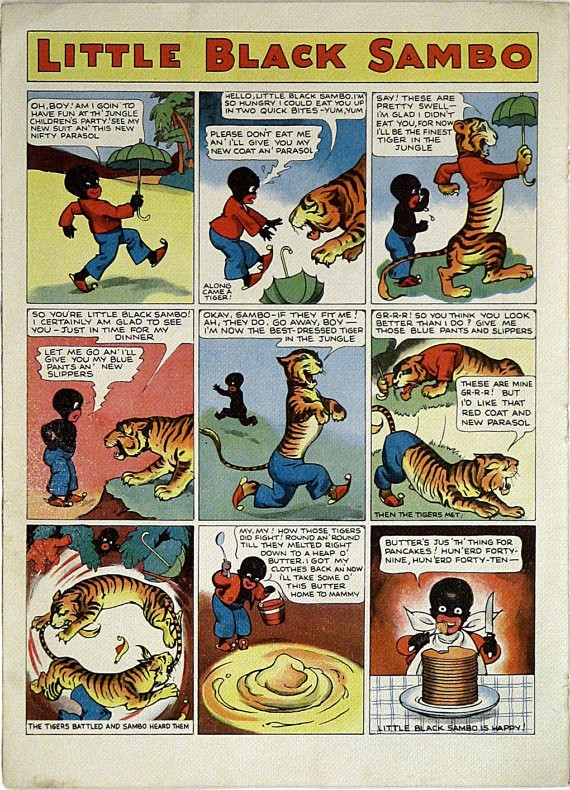
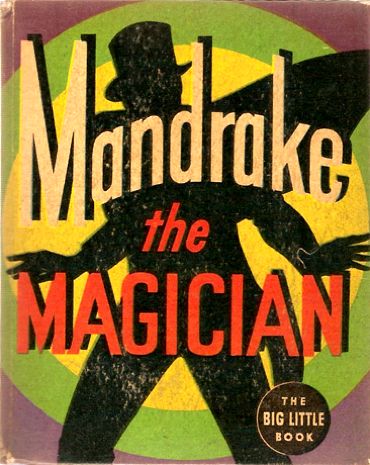
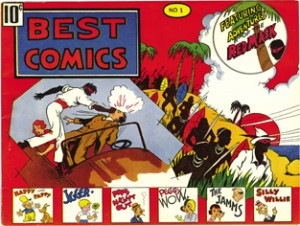

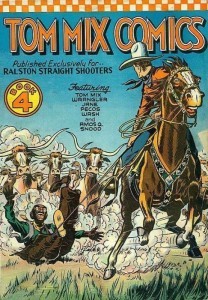
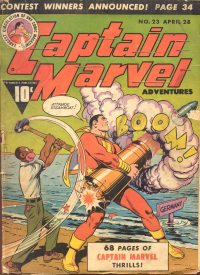
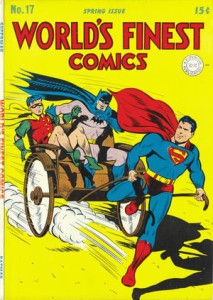
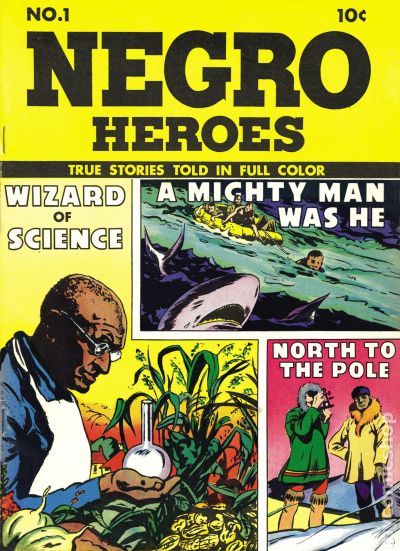

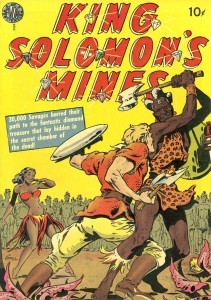
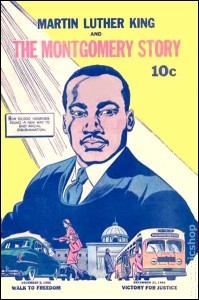
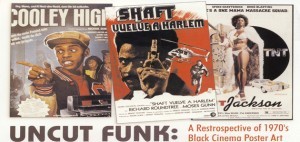

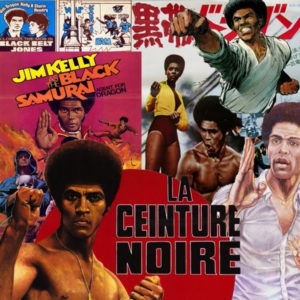

2 Comments
You seem to have missed Siberia a non stereotypical African American maid in Brenda Starr who while a maid was treated as an equal in many stories – she started in1942 and was still going strong in the early 50’s – it also featured her boyfriend again not stereotypical in many stories thanks for the articles they are very good- par t2 proabbly ahs brothers of the spear etc
Thanks for everything for you this content Superb post! Need a custom book cover design? Visit http://www.inkstorydesigns.com